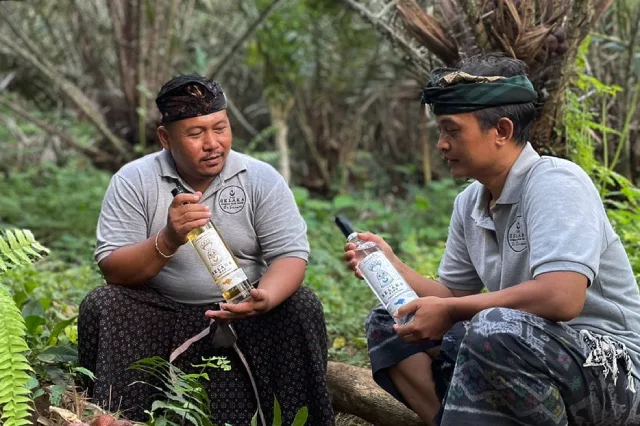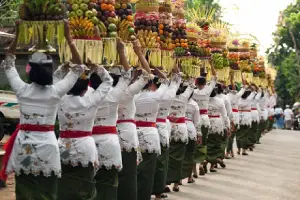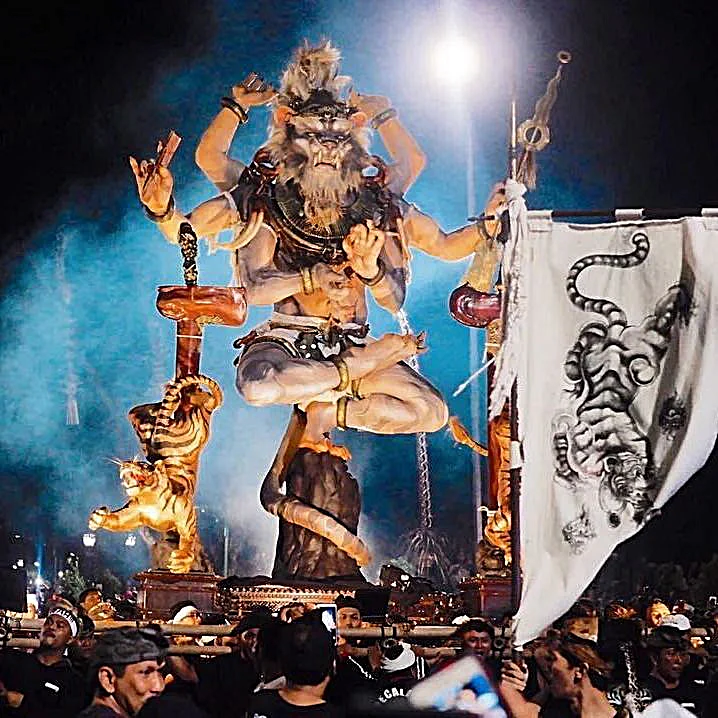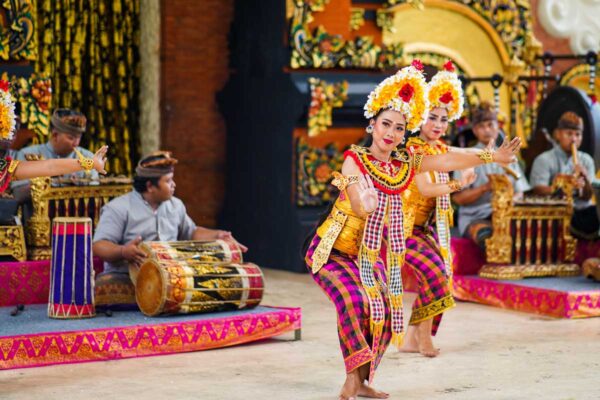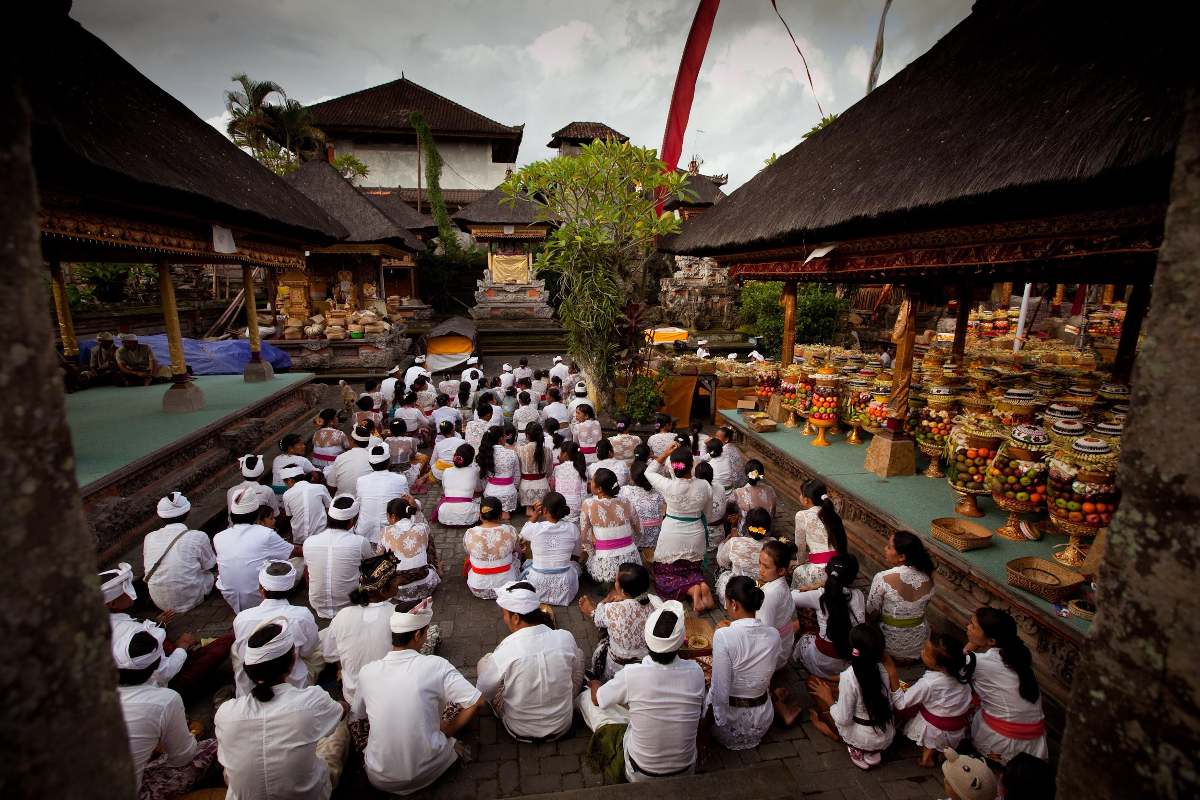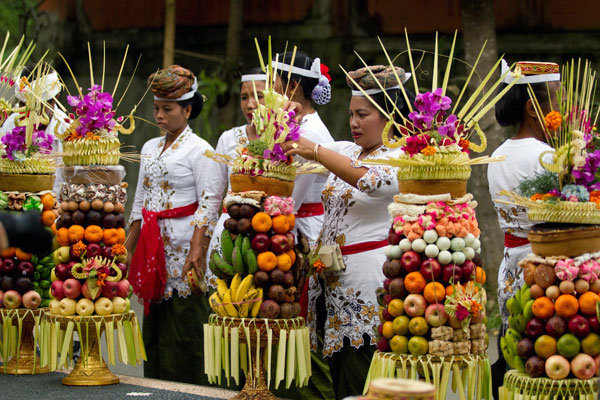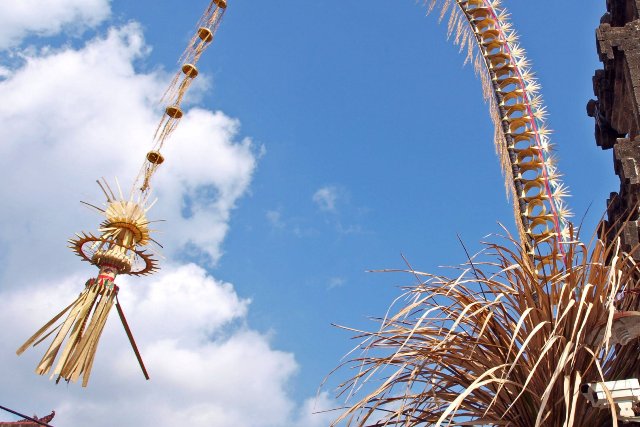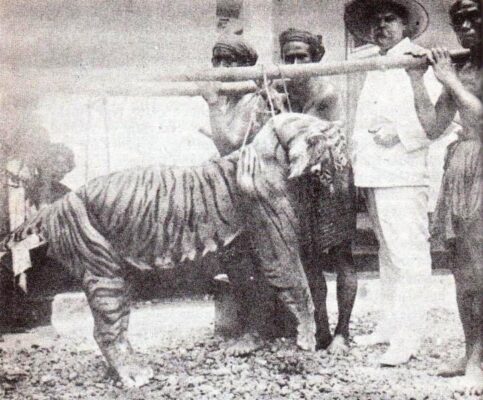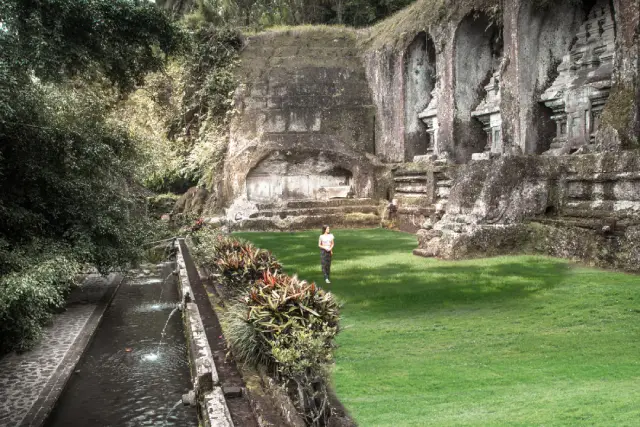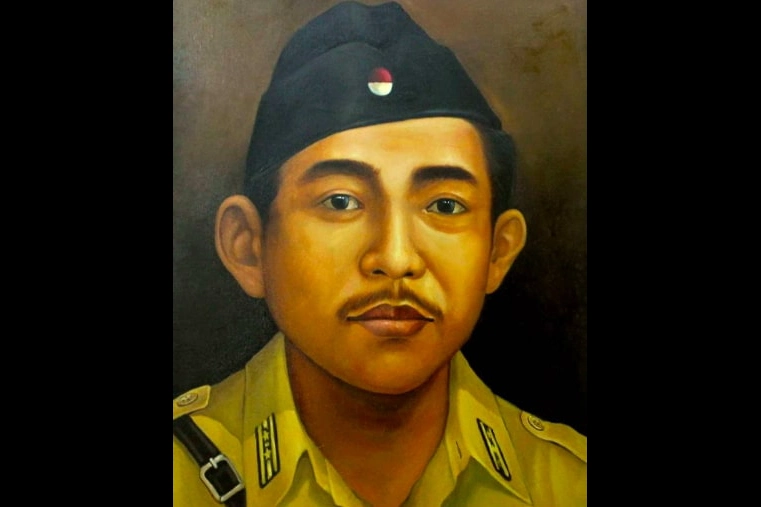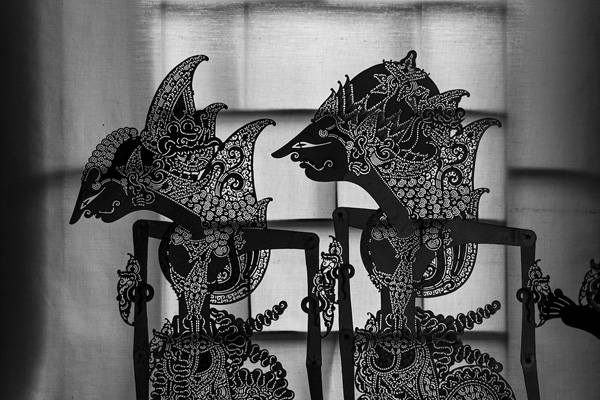Things to Do in Bali
Nyepi & Bali New Year 2025 – The Complete Guide
Everything Visitors Need to Know About Bali’s Day of Silence
Nyepi 2025 Dates
FR 28. Mar – Evening into the NIght
OGOH-OGOH Parades
Many Shops will already Close
ATMs might stop working
Sa 29.Mar 6:00am until Su 30. 5:59 am
NYEPI – Silent Day / EVERYTHING CLOSES FOR 24h, EVERYBODY STAYS AT HOME
Su 30.Mar 6:00am
End of Silent Day – most shops open again
What you need to know about Nyepi and The New Year Celebrations in Bali
The Balinese New Year is not just a single day but a series of sacred rituals observed over six days. Nyepi, the Day of Silence, is the most well-known part, but it is only one aspect of this deeply spiritual celebration.
The Balinese New Year – A Six-Day Celebration
a time of purification, renewal, and reflection. The six-day observance includes:
- Melasti Ritual – A purification ceremony at the sea (3–4 days before Nyepi).
- Bhuta Yajna & Ogoh-Ogoh Parade – The night before Nyepi, featuring demon effigies and processions.
- Nyepi – The Day of Silence, where all activity in Bali stops.
- Ngembak Agni – The day after Nyepi, where families seek forgiveness and celebrate renewal.
Nyepi – the Day of Silence will begin on Saturday, March 29, 2025, at 5:59 AM and will end on Sunday, March 30, 2025, at 6:00 AM.
This is a 24-hour period of total silence observed across the entire island of Bali.
During Nyepi, Bali completely shuts down for 24 hours.
– The airport is closed (no flights in or out).
– Shops, businesses, and restaurants remain closed.
– No one is allowed outside, including tourists.
– No internet or mobile service in some areas.
– Lights must be kept off or dimmed.
Local security officers, known as Pecalang, enforce these rules to maintain the sacred silence.
This year the shutdown will be from March 29th 6AM to March 30th 6AM.
Nyepi rules are strictly enforced by local security (Pecalang).
If someone violates the restrictions by making noise, using lights, or going outside, they will be asked to return indoors.
There are no legal penalties for tourists, but respect for the local tradition is expected.
No. Ngurah Rai International Airport (DPS) is completely closed for 24 hours from 6:00 AM on March 29 to 6:00 AM on March 30, 2025.
No flights can land or take off during this time.
Yes, hotels remain open, but guests must stay inside the hotel premises.
Many hotels offer special Nyepi packages with indoor activities and of course keep serving food and drinks, but often with a reduced schedule and menu
During Nyepi, hotels take special measures to ensure that the island remains in total darkness. Guests are required to close their curtains to prevent any light from escaping. Some hotels even use blackout film on windows to ensure no illumination is visible from outside.
In addition to controlling light, guests are encouraged to minimize noise and keep electronic devices on low volume to maintain the silence of the island. While indoor activities and dining are available in many hotels, outdoor lighting and entertainment are strictly limited to respect the sacred nature of Nyepi.
No. Tourists must stay inside their accommodation for the full 24-hour period.
All outdoor activities, including visiting the beach, walking in the streets, or using vehicles, are prohibited.
If you are in Bali during Nyepi definitely go and watch one of the Ogoh Ogoh parades the evening before Nyepi (March 28)
Stock up on food and essentials before the closure if you stay in a private villa or airbnb etc.
Stay indoors and keep noise levels low and don’t use lights or only very dim
Respect the tradition and embrace the peaceful atmosphere.
Many tourists use Nyepi as an opportunity for meditation, reading, and relaxation.
The night before Nyepi, Balinese villages hold the Ogoh-Ogoh Parade.
March 28 2025
– Huge, demonic effigies called Ogoh-Ogoh are carried through the streets.
– The statues represent negative energy and evil spirits.
– After the parade, many Ogoh-Ogoh are burned to cleanse the island.
The best locations to experience the parade include: Kuta, Seminyak, Ubud, Nusa Dua, and Sanur.
The day after Nyepi is called Ngembak Geni, meaning “relighting the fire.”
– Families visit each other and ask for forgiveness.
– Shops, restaurants, and businesses reopen.
– In Denpasar, the famous Omed-Omedan “Kissing Ritual” takes place, where unmarried people take part in a playful mass-kissing event.
It is a time for socializing, celebrating, and embracing the new year.
Nyepi follows the Balinese Caka Calendar, based on the lunar cycle. Here are the upcoming Nyepi dates:
– Nyepi 2025: Saturday, March 29
– Nyepi 2026: Thursday, March 19
– Nyepi 2027: Monday, March 8
– Nyepi 2028: Sunday, March 26
– Nyepi 2029: Thursday, March 15
– Nyepi 2030: Tuesday, March 5
Nyepi always falls on the day after the dark moon of the spring equinox.
Batara Kala is the Balinese god of destruction and time. According to mythology:
– He is believed to consume unlucky humans.
– He is responsible for solar and lunar eclipses.
– The Bhuta Yajna Ritual and Ogoh-Ogoh Parade are performed to appease Batara Kala and prevent misfortune in the new year.
Nyepi – The Day of Silence, A Unique Tradition
Nyepi is a sacred Hindu holiday in Bali and an important public holiday across Indonesia. Unlike other cultures that celebrate the New Year with festive gatherings and fireworks, the highlight of the Balinese New Year is a day of complete silence—Nyepi.
Nyepi & The Balinese Calendar
Nyepi marks the beginning of the “Caka” year, the Balinese New Year, which is observed over six days. On Nyepi, the Balinese Hindu community dedicates the day to deep spiritual connection through prayer, fasting, and meditation, seeking self-reflection and renewal for the year ahead.
The Balinese calendar consists of 12 sasih (months), each lasting 35 days. This cycle aligns with one full moon (Purnama) and one new moon (Tilem). Nyepi takes place the day after the dark moon of the spring equinox, a time when day and night are nearly equal in duration. On this day, the entire island falls into complete silence and darkness.
Nyepi is one of the most significant and elaborate religious ceremonies in Bali. According to local folklore, following the lively celebrations leading up to Nyepi, the island “hides” by embracing silence and darkness to protect itself from wandering evil spirits, creating the illusion of a deserted land.
What Happens During Nyepi
The Night Before: Ogoh-Ogoh Parades
On the eve of Nyepi, Balinese men and boys carry towering Ogoh-Ogoh statues, some up to 25 feet tall. These giant, intricately crafted figures, made from bamboo and paper, symbolize negative forces and spirits. The streets come alive with the sounds of gamelan music, chanting, and loud noise-making to drive away evil spirits.
Tourists and visitors are welcome to watch and photograph this spectacular event. After the parade, many of these statues are ceremonially burned to purify the island before the Day of Silence. While processions occur across Bali, the most elaborate parades can be seen in Kuta, Seminyak, Nusa Dua, Sanur, and other popular areas. Each village takes great pride in creating its own Ogoh-Ogoh.
The Day of Nyepi: Complete Silence
From sunrise to sunrise, Bali enters a total shutdown. The island observes a 24-hour period of silence, meditation, and self-reflection.
During Nyepi:
– The airport is completely closed, with no flights in or out.
– Roads are empty, and all transportation is halted.
– Shops, restaurants, and beaches are off-limits.
– No one is allowed outside, including tourists and non-Hindu residents.
– No lights, no entertainment, and minimal noise are permitted.
To enforce these rules, local security officers known as Pecalang patrol the streets. The only exceptions are medical emergencies and women in labor, as hospitals remain open.
The Day After: Ngembak Geni
After 24 hours of silence, Bali comes back to life with Ngembak Geni, a day of renewal and social reconnection.
On this day:
– Families and friends gather to ask for forgiveness and strengthen relationships.
– Many people spend time outdoors, enjoying nature and social activities.
– Some areas celebrate with unique traditions, such as the Omed-Omedan “Kissing Ceremony”, where unmarried young people participate in a playful mass-kissing ritual.
– Other regions hold community events, including mud bathing, street markets, and cultural performances.
Ngembak Geni marks a fresh start, symbolizing harmony, forgiveness, and the beginning of the Balinese New Year.
Nyepi Rituals and Their Significance
Throughout the holy week leading up to Nyepi, various rituals take place across Bali. While the Balinese New Year spans six days, the Day of Silence is just one part of this sacred celebration.
Melasti Ritual
The Melasti Ritual, also known as Melis or Mekiis, is performed 3–4 days before Nyepi. Dedicated to Sanghyang Widhi Wasa, this purification ritual takes place at seaside temples (Pura Segara) to collect holy water. The water is used to cleanse sacred temple objects such as Arca, Pratima, and Pralingga.
Similar purification ceremonies also occur at Balekambang Beach on the southern coast of Malang, East Java, as part of the Jalani Dhipuja ritual.
Bhuta Yajna Ritual & Ogoh-Ogoh Parade
The Bhuta Yajna Ritual takes place the night before Nyepi. This ceremony is designed to banish negative forces and restore balance between God, humanity, and nature. Offerings known as Pecaruan are made to appease Batara Kala, the god of destruction.
During Tawur Kesanga and Caru ceremonies, villages construct giant Ogoh-Ogoh statues, which represent evil spirits. Made from bamboo and paper, these towering figures are paraded through the streets at sunset, accompanied by gamelan music, drums, and loud noise-making to drive away negative energy.
The most impressive Ogoh-Ogoh processions can be seen in Kuta, Seminyak, Nusa Dua, Sanur, and other major areas. Some villages hold contests for the best statue, while others burn their Ogoh-Ogoh during the Ngrupuk ceremony, symbolizing the removal of evil from the island. However, not all statues are burned—ask locals about their village customs.
Nyepi – The Day of Silence
Nyepi is a day of complete silence and reflection. To honor this sacred time, all activity in Bali stops. The island enforces four main restrictions, known as Catur Brata Penyepian:
Amati Geni: No fire or light, including electricity. Abstaining from cooking and entertainment.
Amati Karya: No work or physical activity, except for spiritual practices.
Amati Lelunganan: No travel or leaving one’s home.
Amati Lelanguan: No entertainment or self-indulgence.
The Yoga Brata Ritual begins at 6:00 AM on Nyepi and continues until 6:00 AM the next day. Many Balinese Hindus spend the day in meditation, while others simply remain indoors, following tradition.
Ngembak Agni / Labuh Brata Ritual
The day after Nyepi, known as Ngembak Agni or Labuh Brata, marks the official start of the Balinese New Year. Families and friends visit one another to exchange forgiveness and renew relationships.
On this day, many people participate in Dharma Canthi, where they read ancient scriptures such as Sloka, Kekidung, and Kekawi. A unique tradition in Bali is the Omed-Omedan, or Kissing Ritual, where unmarried young people take part in a playful mass-kissing event as part of the celebration.
When is Nyepi in Bali?
| Year | Date | Caka Year |
|---|---|---|
| Nyepi 2025 | Saturday, 29th March | 1947 |
| Nyepi 2026 | Thursday, 19th March | 1948 |
| Nyepi 2027 | Monday, 08th March | 1949 |
| Nyepi 2028 | Sunday, 26th March | 1950 |
| Nyepi 2029 | Thursday, 15th March | 1951 |
| Nyepi 2030 | Tuesday, 5th March | 1952 |

















